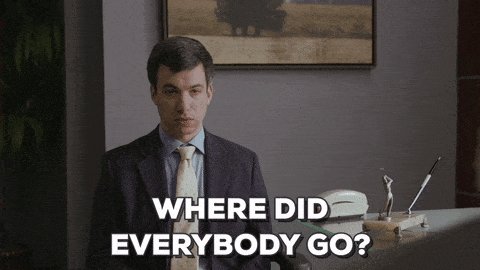Labor Shortage! Help Wanted! Great Resignation! Sound familiar?
If you’ve been paying attention to recent labor market news, you’ve likely picked up on the fact that things are getting rocky.
In August 2021, 4.3 million workers quit. And, before that, 3.9 million workers clocked out for the last time. And, before that, 4 million workers left.
What’s happening in the labor market is impacting businesses everywhere. However, the more recent mass exodus was primarily driven by the retail and hospitality workers cycling out of their industries for most of 2021.
But, why? And more importantly, what can businesses do to address their retention levels?
To better understand the global labor landscape, we’ve broken down the labor shortage definition and top factors driving the gap.
Why Is There A Labor Shortage?

There are plenty of industries grappling with a labor shortage right now. But, to understand why it matters, it’s important to start with a labor shortage definition.
According to the New York Times, the current labor shortage is “the phenomenon of a labor market with more job openings than unemployed workers.”
For example, as of September 2021, there were more than 8.4 million unemployed workers and 10 million job openings recorded in the U.S.
Some are calling this moment the Great Resignation. Others have coined it the Great Reassessment. Either way, open positions are staying unfilled while more and more workers decide to look for greener pastures.
But why is there a labor shortage to begin with?
While the world was in lockdown, workers were re-assessing. They were re-imagining their jobs, pay, lifestyles, goals, etc., because they had time on their hands.
Now, businesses are opening back up to full capacity in some states. And employees are deciding if they are ready to go back. Many aren’t.
Factors Driving the Labor Shortage
The labor gap in frontline-heavy industries is being driven by other factors, like burnout and industry transition.
For example, the frontline employees that kept us all going in 2020 are suffering from widespread burnout. Earlier in 2021, 52% of employees were reportedly experiencing feelings of burnout. And two-thirds of employees say the pandemic is the leading cause of the hike.
Other factors spurring the frontline shortage are:
- Physical and mental health concerns
- Pay increases
- Government stimulus support
- At-home care demands
Ultimately, frontline and desk workers alike are rethinking what work means to them. For some, it’s better benefits. For others, it’s doing something entirely different.
How the Labor Shortage Impacts Big Industries
The labor shortage is affecting every industry, especially those with a frontline-majority workforce. Let’s see how the labor gap is impacting some of these workforces.
Construction
The construction labor shortage is, in large part, being driven by more people working from home. They’re looking for newer, bigger houses with enough space to hold both family and work life in one place.
Currently, the construction industry is missing more than one million workers. It bounced back quickly after the pandemic, but it still lacks the full force it needs to keep up with demand.
Businesses trying to address the construction labor shortage are focusing on:
- Attracting the next generation of workers
- Enhancing their work cultures
- Investing in training and development
Manufacturing
The manufacturing labor shortage is not new. The industry was grappling with open positions and an aging workforce well before the pandemic.
However, according to Deloitte, U.S. job openings in manufacturing have more than doubled from their pre-pandemic levels.
That means there’s a bigger manufacturing labor shortage than usual.
Retail
The retail industry is getting hit particularly hard by the labor shortage. There were more than 965,000 open retail positions in July 2021.
Now, retailers are wondering how they’ll tackle the holiday season without a full team.
Hospitality
One in three hospitality workers is choosing not to return to the industry. That should give you some indication of how the industry is doing in the current labor shortage.
While hospitality businesses are eager to open up to full capacity, they’re struggling to hire back the employees they need to do it.
What You Should Know About The Global Labor Shortage
Jobs with a labor shortage need to get filled quickly. But, what if businesses can run defense before their employees walk out the door?
The global labor shortage may be here for a while. But that doesn’t mean businesses are helpless when it comes to keeping their existing staff on board.
Now more than ever, businesses should focus on employee engagement and retention. Gallup indicates the current labor market challenges are the result of an increase in active disengagement at work.
Currently, 74% of the workforce is disengaged. And the lost productivity from that disengagement is equal to 18% of the employee’s annual salary.
If there’s anything you should know about the labor gap, it’s this. Keeping employees engaged, motivated, and fulfilled will make the difference for businesses that successfully navigate the shortage.
How COVID-19 Changed The Labor Market
If you haven’t noticed yet, there’s one common theme contributing to the labor shortage: COVID-19.
There is no question the pandemic changed our world forever. But it also changed the labor market for good. Here’s how.
Accelerating The Digital Transformation

First, there is a mobile transformation underway across big industries. In an IndustryWeek webinar hosted by Samsung, experts gave their viewpoint on Empowering Your Manufacturing Workforce | Mobile Transformation Post-COVID as well as the digital transformation, employee engagement, and knowledge transfer.
“Digitally enabled frontlines have real-time access to data and to each other. Their workflows are paperless, their communication is seamless, and they have all the tools and information they need to do their jobs well and to do them safely.”
– Kevin Eaton, Samsung
Businesses battling a disengaged and disconnected workforce right now need mobile solutions to retain their talent.
Mobile tech solutions aren’t only good for reaching frontline workers where they are – albeit, that’s an excellent business case. They are also solid tools for boosting operational efficiencies and transferring knowledge in the event of turnover.
Re-Imagining Employee Retention and Turnover
Businesses may have to come to terms with the fact that employee turnover could be here to stay. But all hope is not lost!
Ready to learn 4 communication strategies to combat turnover so you can get the leg-up you need to engage, connect, and retain your frontline talent.
Additionally, businesses struggling to keep their staff are likely seeing decreasing employee retention rates. But, they’re not alone.
Remember, employee retention rates are most useful when compared across the industry. Now might be the time to re-balance your employee retention rate and see how it stacks up in comparison to other similar-sized companies in your industry.
Putting The Focus Back On Employee Wellbeing
The pandemic put physical health and wellness in the workplace at the top of everyone’s list. Which is where it should be. But it also broke the quiet taboo surrounding mental health discussions in the workplace.
Going forward, businesses are expected to keep employee mental and physical wellbeing as a top priority. Especially if we want frontline employees to stay engaged, inspired, and motivated to continue doing their essential work.




